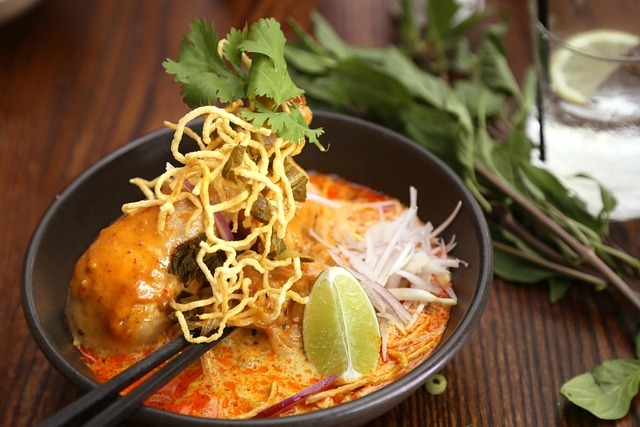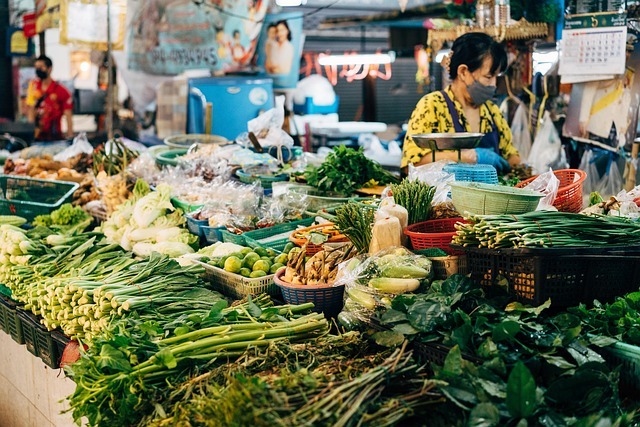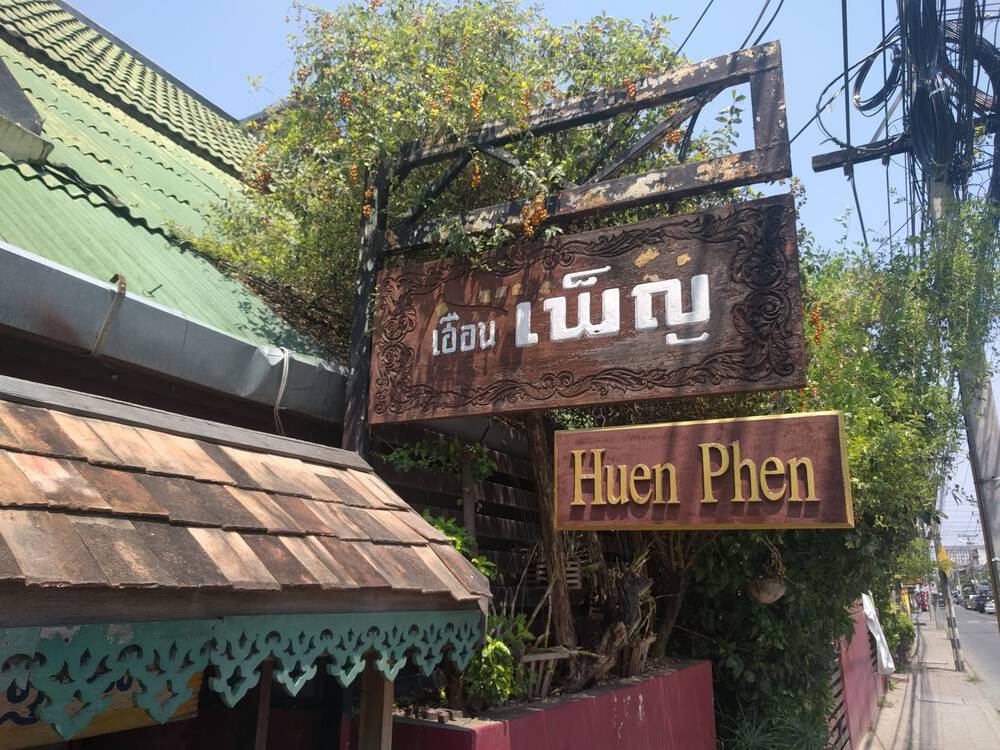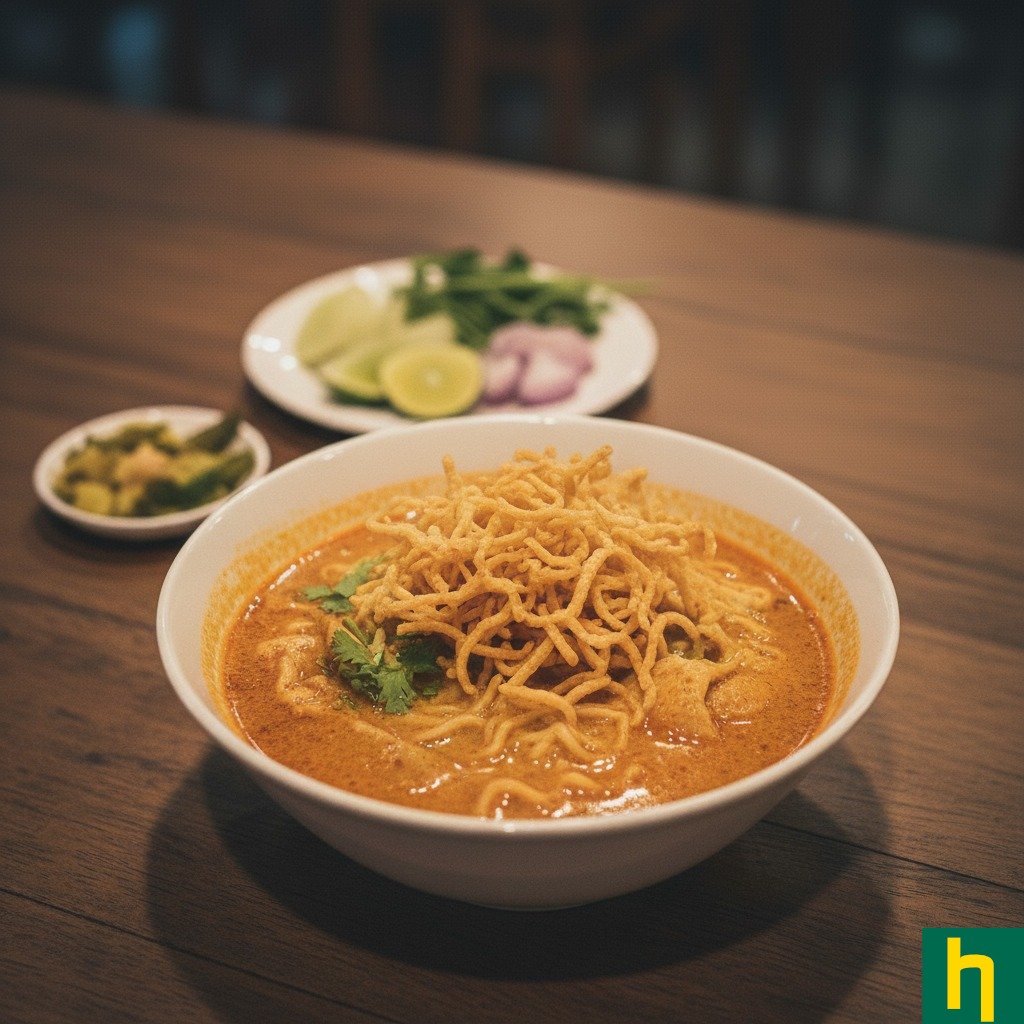For the discerning traveller, understanding a destination often means delving into its foodways. If you’re craving a more authentic understanding of Northern Thai food, this post is for you.
Northern Thai food stands as one of the four distinct regional styles within Thai cuisine. The history of the mountainous north, once home to the Lanna Kingdom that rivalled Sukhothai and Ayutthaya, has shaped a culinary heritage more akin to Burmese or Laotian food traditions than to those of Thailand’s central plains.
Northern Thai Food vs Central Thai Food
Lanna cuisine is intrinsically linked to the historic trade routes of Southeast Asia, where countless paths once converged on the powerful Lanna Kingdom. The original Lanna Kings, being of Tai Yuan descent (related to Lao, Shan, and Tai Lue peoples), significantly shaped the region’s culinary identity. As a result, many dishes popular in Chiang Mai can also be found in kitchens and restaurants across Laos and Myanmar, showcasing a shared cultural and culinary heritage.
The landscape of any region always dictates its flavours, and Northern Thailand is no exception. In this case, coconut milk is rarely used. The northern provinces, being landlocked, had less access to coconuts (at least in the olden days). Instead, the creaminess of a northern Thai dish comes from pounding down ingredients like dried fish, pork rinds, or dried rice.
And because of its inland location, freshwater fish is far more common in Northern Thai dishes than seafood. Ingredients like pla duk (catfish) and other river fish are prominently featured. While shrimp paste is a foundational ingredient in many central and southern Thai curries, its use is less prevalent in the north. Northern Thai cuisine often uses fermented soybean paste (tua nao) for umami and depth of flavour.
Lanna cuisine thrives on the produce of its valleys and highlands. Fresh herbs are used generously. Northern food is characterised by its herbal, earthy, fresh, and less sweet flavours, distinct from its Central Thai counterpart. Favours lean towards hot and salty, with heat from chillies, ginger, and galangal.
Spices are often dried (like cumin, coriander, etc.) rather than fresh. These dry spices are toasted and ground into a powder or paste. This process creates a much more aromatic flavour profile than just adding raw, fresh spices. It’s these ground spices that form the basis of Northern Thai curry pastes.
And just as in Laos and the Isan region, sticky rice is a food staple. The traditional Khantoke dinner offers the foodie traveller the opportunity to experience this traditional dining style, where they serve sticky rice with accompanying dishes on a round, elevated tray.
Must-Try Lanna Dishes: A Curated Culinary Journey

The heart of Chiang Mai’s Lanna heritage beats strongest in its kitchens. Iconic Northern Thailand dishes define this unique culinary landscape best.
Khao Soi: Curried Noodles
To visit Chiang Mai and not sample Khao Soi is a culinary oversight of the highest order. Ironically, this is one Northern Thai dish that is rich in creamy coconut. This curry-like soup, simmered to perfection, features boiled egg noodles and crispy fried noodles as toppings.
Typically, you add condiments yourself as per your preference: pickled mustard greens, shallots, lime, and a fiery chilli oil.
Khao Soi has Burmese influences. And every Northern Thai family has its fiercely guarded Khao Soi recipe, passed down over the years. To find the most authentic versions, venture beyond the tourist zones into the side streets, where family-run eateries serve the tastiest of bowls.
Sai Oua: Northern Thai Sausage
This isn’t your average sausage; Sai Oua is a part of Lanna’s love affair with fresh herbs and spices. This grilled pork sausage, distinctively coiled like a snake, is a blend of lemongrass, kaffir lime leaf, galangal, and chillies. The minced pork is pounded with herbs and stuffed into casings, turning its creation into an art form. You’ll also find Sai Oua as a staple in Vientiane Lao cuisine.
The ancient Lao word “Sai Oua” literally means “intestine stuffed.” In Myanmar, they enjoy a similar sausage, Sai Long Phik, as a snack, an appetiser, or with sticky rice and chilli dips. The best Sai Oua comes from local markets, where you’ll see it grilled over charcoal.
Kaeng Hang Lay: Burmese Style Curry
The old Lanna Kingdom was a crossroads of cultures, with influences from Laos, Myanmar (Burma), and Yunnan Province in China. And Kaeng Hang Lay would’ve been one of the foods that originated along these trade routes, most likely in Myanmar, by way of India.
This slow-cooked curry has a rich, thick consistency and spicy profile of ginger, garlic, tamarind, and curry powder. Tender chunks of pork belly are simmered for hours.
Nam Prik Ong & Nam Prik Num
These two chilli dips are the quintessential accompaniment to any Khantoke dinner. Nam Prik Ong is a savoury, slightly sweet dip of ground pork, tomatoes, and chillies, reminiscent of a spicy Bolognese sauce. Nam Prik Num, on the other hand, is a green spicy dip crafted of green chillies, garlic, and shallots, pounded up into a fiery but delicious paste.
Diners tear and dip fresh vegetables, sticky rice, and crispy pork crackling into both dishes. It’s a hands-on dining experience that is so characteristic of Northern Thai food heritage.
Tam Khanun – Jackfruit Salad
If you want something to challenge your sense of foodie spirit, then Tam Khanun is one to add to your list. Unripe jackfruit is boiled and shredded, then pounded in a mortar and pestle with herbs and chillies.
The result is a meaty texture of a herby zest. The Lanna people have long demonstrated their ingenuity in food. Taking the most humble local ingredients and turning them into specialities, as in the case of this dish.
Immersive Culinary Experiences in Chiang Mai

A deep dive into Lanna cuisine extends beyond the restaurant table. Peel back the layers of tradition by engaging with the locals and understanding the significance of what you’re eating. There’s no better way to do this than with a Thai Cookery course – and you’ll find plenty of them in Chiang Mai.
The best cooking classes in Chiang Mai offer a window into Lanna’s culinary soul. Start your day at the wet markets. Here, you’ll identify the freshest herbs, select the ripest chillies, and understand the provenance of each ingredient. Under expert guidance, you’ll pound your curry paste with the skill of a local.
Bypass the heavily touristed night bazaars and instead journey to the morning market like Warorot (Kad Luang) or Sompet, or the biggest of them all, Mung Mai. It’s at the food market that you’ll witness the authentic pulse of local life. It’s a place where housewives source the freshest fish, where young women, still in their pyjamas, buy their fresh vegetables for a day’s cooking.
Eat Like The Locals
The true magic of Chiang Mai’s food scene lies in its unassuming, family-run eateries tucked away down sois and back roads. These are the places where grandmothers still oversee the cooking, and recipes have remained unchanged. Ask locals for their favourite spots, or just wander down a side street and follow your nose.
The best meals are found in the most humble settings, where the focus is entirely on the authenticity of the food, rather than presentation. Entering one of these places, you’re seeing the real Thailand, not a packaged and commodised version.
Northern Thai Restaurant in Chiang Mai: Huen Phen

This brand is an institution in Chiang Mai. I say brand because there are now three locations: The Old City, Nimmanheim and Ratchaphruek. The only one I’ve personally visited is that of the Old City.
Oh, so long ago, as a newbie in Chiang Mai, this is where I first experienced Northern Thai food. And I’m proud to say that after all that time, I’m still a regular, usually once a month.
Lunch: During the day, Huen Phen operates with a casual atmosphere. Food is served from an open kitchen, giving it a lively, local feel. There’s also an air-conditioned room for those seeking a cooler escape.
Dinner: In the evenings, the restaurant moves to the room next door. It is a quaint setting with lots of old-style Lanna bric-a-brac adorning the walls and floors. Unfortunately, the antique-strewn house has seen better days. The food remains top-notch, though – and it’s still a classy setting for your Thai food feast.
The menu is extensive, and many of these dishes you’ll have a hard time finding elsewhere. Portions aren’t huge, which is a plus – it encourages ordering several dishes and truly experiencing the joys of traditional Northern Thai food.
Service is fast and efficient, even though the restaurant can get busy during the daytime. The staff are accustomed to both locals and tourists. Huen Phen is consistently praised for its excellent value, offering authentic Northern Thai food at reasonable prices.
A visit to Huen Phen is a must for a foodie visiting Chiang Mai. Its long-standing reputation, authentic flavours, diverse menu, and value make it a highly recommended dining destination. Whether you’re a seasoned Thai foodie or a curious first-timer, it offers a delicious culinary journey into the heart of Lanna cuisine.
Planning Your Northern Thai Food Adventure
When to Visit: The ideal time to immerse yourself in Chiang Mai’s culinary scene is during the cool, dry season, typically from November to February. During these months, the humidity subsides, offering comfortable temperatures perfect for exploring outdoor markets and eating at street food stalls.
Loy Krathong in November is a must-see for newcomers to Chiang Mai – a great opportunity to witness Thai heritage at its finest. Avoiding the hotter months (if you can, March to May) will significantly enhance your enjoyment of outdoor culinary experiences.
Follow the Locals: A golden rule for any food enthusiast is to go where the locals do. If Thai patrons pack a street stall or restaurant, you’re likely onto something. Don’t let online reviews from unfamiliar sources sway you; seek out local recommendations.
Ask Questions: Engage with the vendors, chefs, and staff. A simple “what’s in this?” or “how do you make this?” can open doors to insights and anecdotes about the dishes and their history.
So, no matter if you’re a seasoned foodie or beginning your culinary exploration, Northern Thai cuisine is a rewarding experience. The flavours of Lanna, with emphasis on aromatic dry spices, you’ll discover a world of taste beyond mainstream Thai cuisine.
Northern Thai Food FAQs
What are the main characteristics of Northern Thai cuisine?
Northern Thai cuisine, also known as Lanna cuisine, is defined by its distinct flavour profile. Unlike Central Thai food, it is generally less sweet and often lacks coconut milk. The flavours are more herbal, salty, and earthy, with an emphasis on fresh ingredients, dried spices, and fermented foods like soybean paste. Sticky rice is the staple carbohydrate and is typically eaten by hand with the meal.
How is Northern Thai cuisine influenced by neighbouring countries?
Due to its geographical location, Northern Thai food has significant influences from its neighbours. Dishes often have a Burmese influence, seen in rich, slow-cooked curries, and share similarities with Laotian cuisine, particularly in the use of sticky rice and the style of various meat salads. This blending of traditions gives the region’s food a unique and complex character.
What are some of the key dishes to try in Northern Thailand?
A must-try dish is Khao Soi, a rich curry noodle soup with both soft and crispy egg noodles, often with chicken or beef, and a coconut milk-based broth. Other essential dishes include Sai Oua, a flavorful grilled pork sausage packed with herbs, and Kaeng Hang Lay, a slow-cooked pork belly curry with Burmese roots. Visitors should also try the iconic chilli dips, Nam Prik Ong and Nam Prik Num, served with fresh vegetables and pork rinds.
How does Northern Thai food differ from Isan (Northeastern) food?
While both regions favour sticky rice and spicy flavours, there are key differences. Northern Thai cuisine tends to be more herbal and less fiery, with influences from Burmese and Chinese cooking. Isan food, by contrast, is known for being extremely spicy, with a heavy emphasis on grilled meats, salads, and sour flavours, reflecting a stronger Laotian influence. Isan cuisine also frequently uses ingredients like fermented fish (pla ra) for its signature funky taste.
What is the role of sticky rice in Northern Thai food?
Sticky rice, or khao niao, is the culinary staple of Northern Thailand. Unlike the fluffy jasmine rice of the central region, sticky rice is dense and glutinous. It is served in small baskets and is used to scoop up sauces and curries, acting as both a food and an eating utensil. It provides a grounding, neutral contrast to the strong, pungent flavours of the main dishes.

